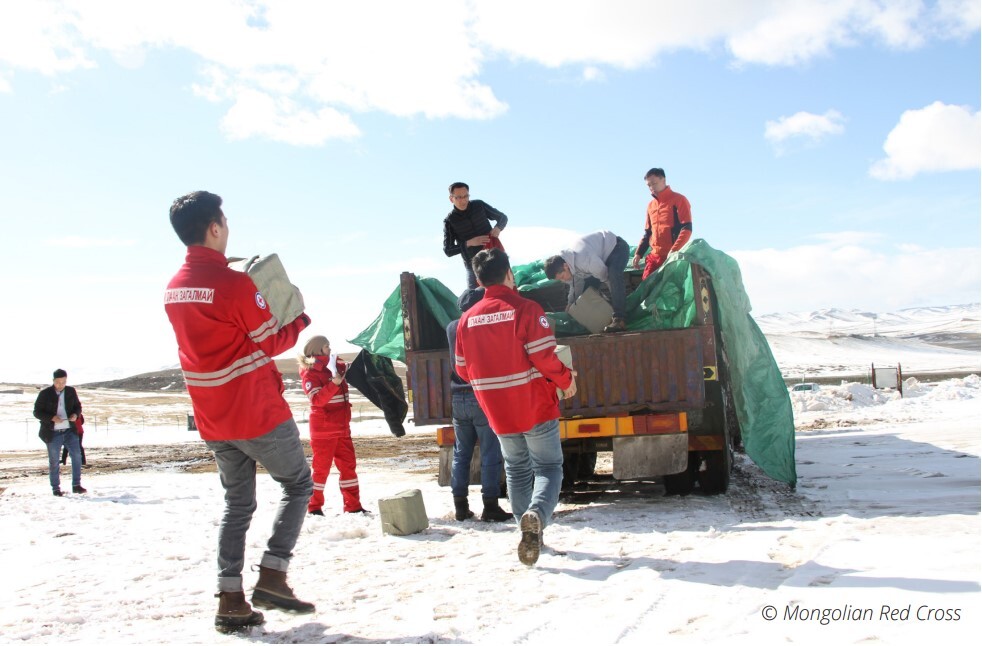
Photo: IFRC

Photo: Mongolian Red Cross
Location
Mongolian Red Cross and Mongolia
Mongolian Red Cross (MRCS) was established in 1939 serving as a “national humanitarian assistance organization”, or the sole nationwide humanitarian organization in Mongolia. Disaster management is one of the four pillars of MRCS, which work for Mongolia, a country vulnerable to different types of natural disasters, including droughts, storms, and earthquakes.
Issue
Severe winter conditions and flooding
A severe winter condition called “dzud” is a serious problem in Mongolia, in which the situation is becoming harsher due to climate change effects. When “dzud” occurs, livestock dies from cold and poor nutritional conditions, affecting livelihoods. “Dzud” occurs in Mongolia every four to five years, and in the worst cases, a quarter of the livestock died. In addition, damages caused by flooding are also very severe, and many of the areas in their capital city Ulaanbaatar are high-to-medium flood hazard areas.
Solution / Lesson learned
Disaster preparedness project
MRCS has been working to raise capacity against disaster management in Mongolia since 2019 by identifying the gaps in its preparedness measures and establishing Early Action Protocols. Specifically, MRCS has been working to raise its overall institutional capacity by supporting the government in developing various policies, legal acts, and strategies related to disaster management. Moreover, collaboration with various stakeholders has been an enabling factor of its preparedness in disaster management. As a result, the capacity against the overall preparedness in disaster management of Mongolia has improved since 2016. Today, they are a central and indispensable part of disaster management in Mongolia.




